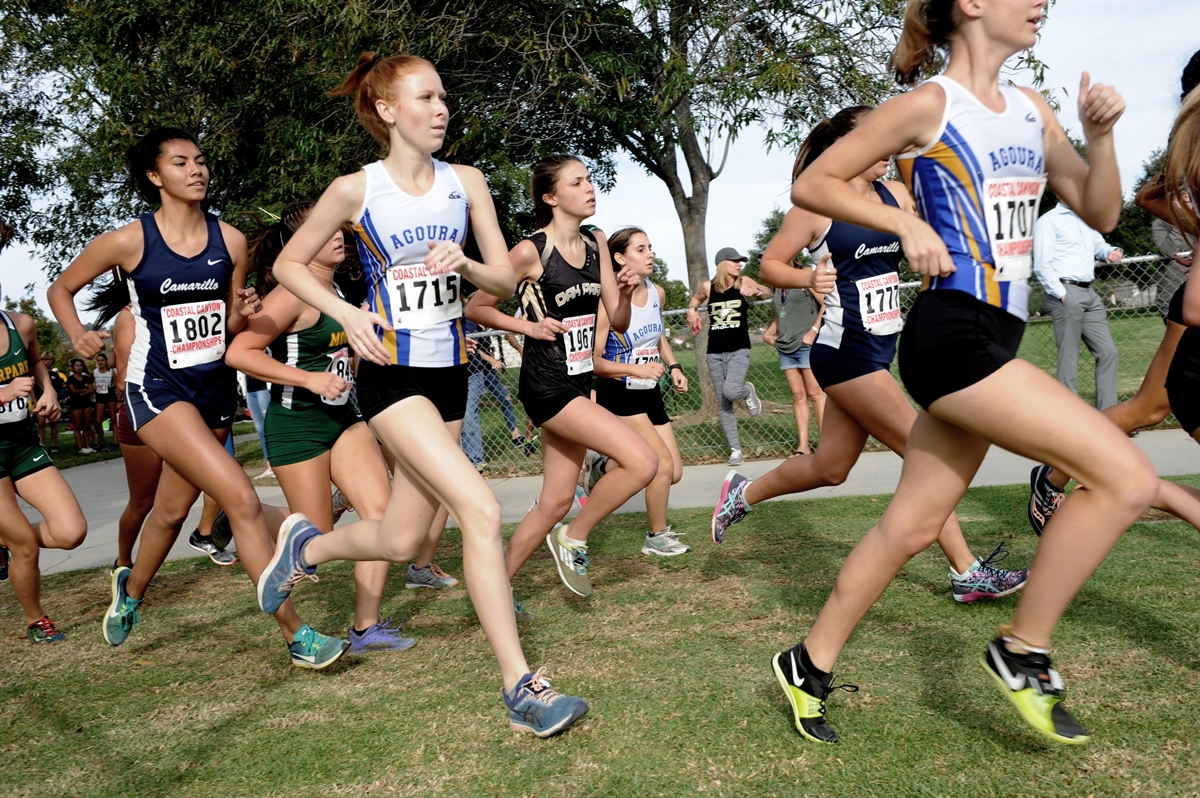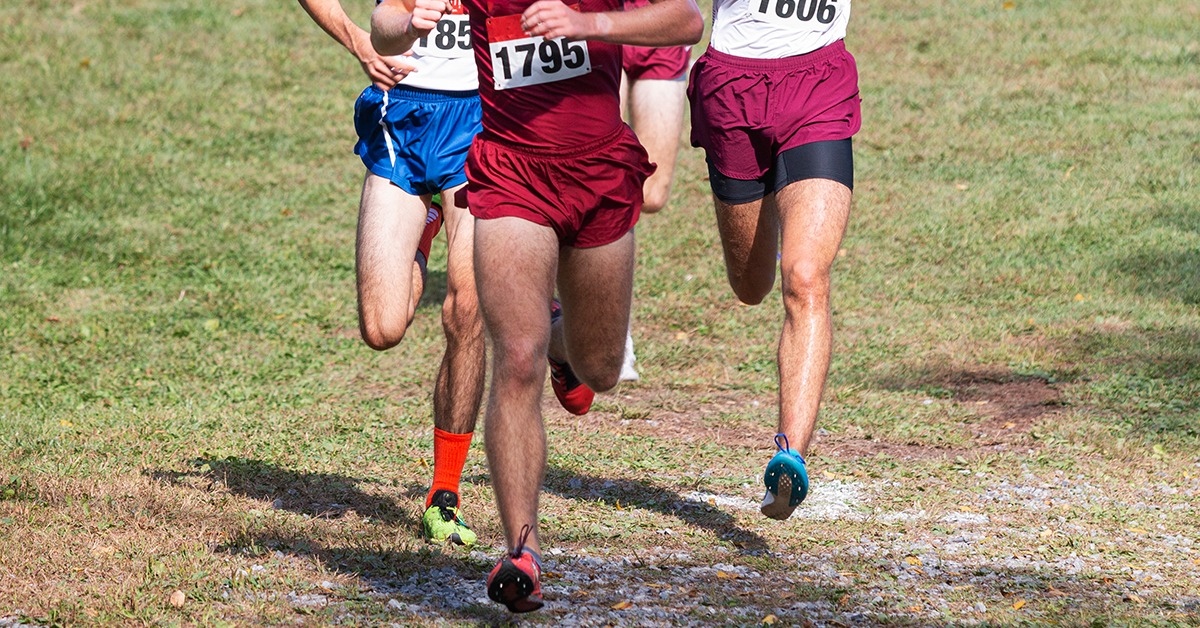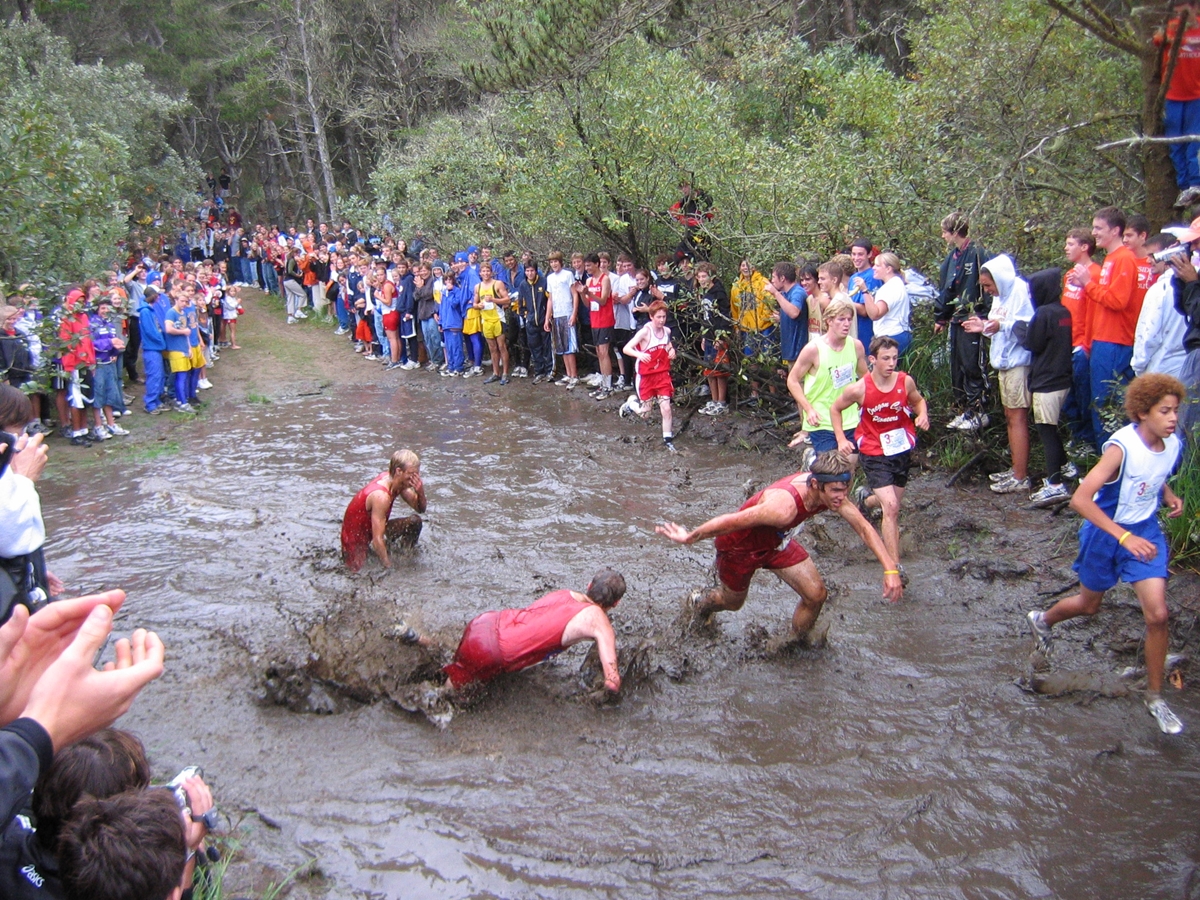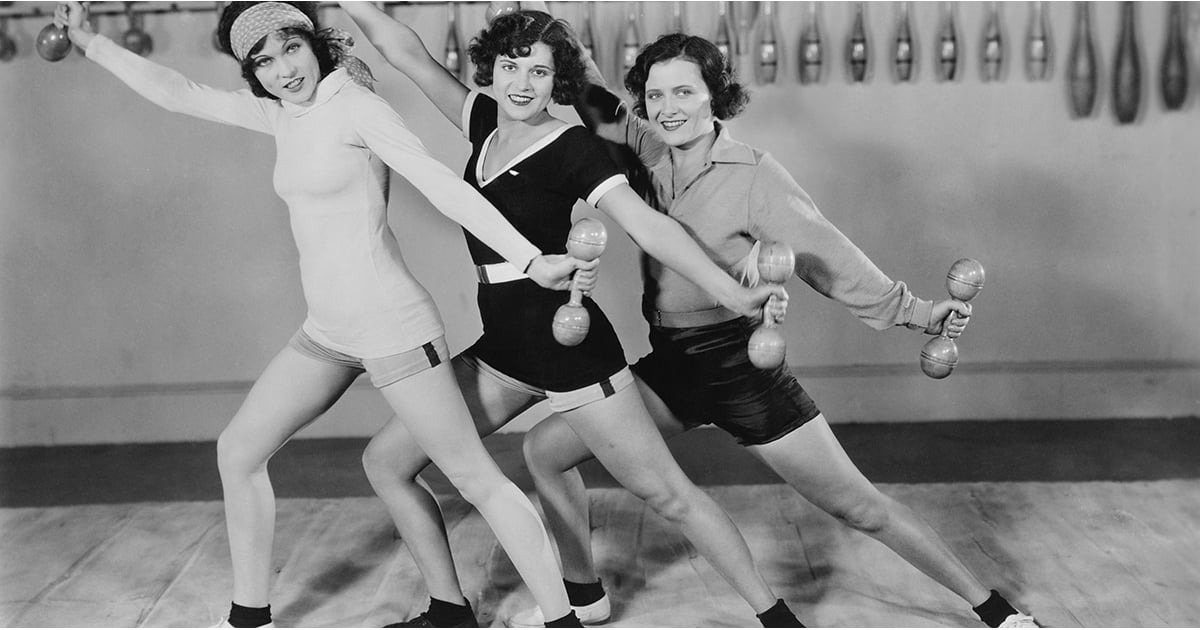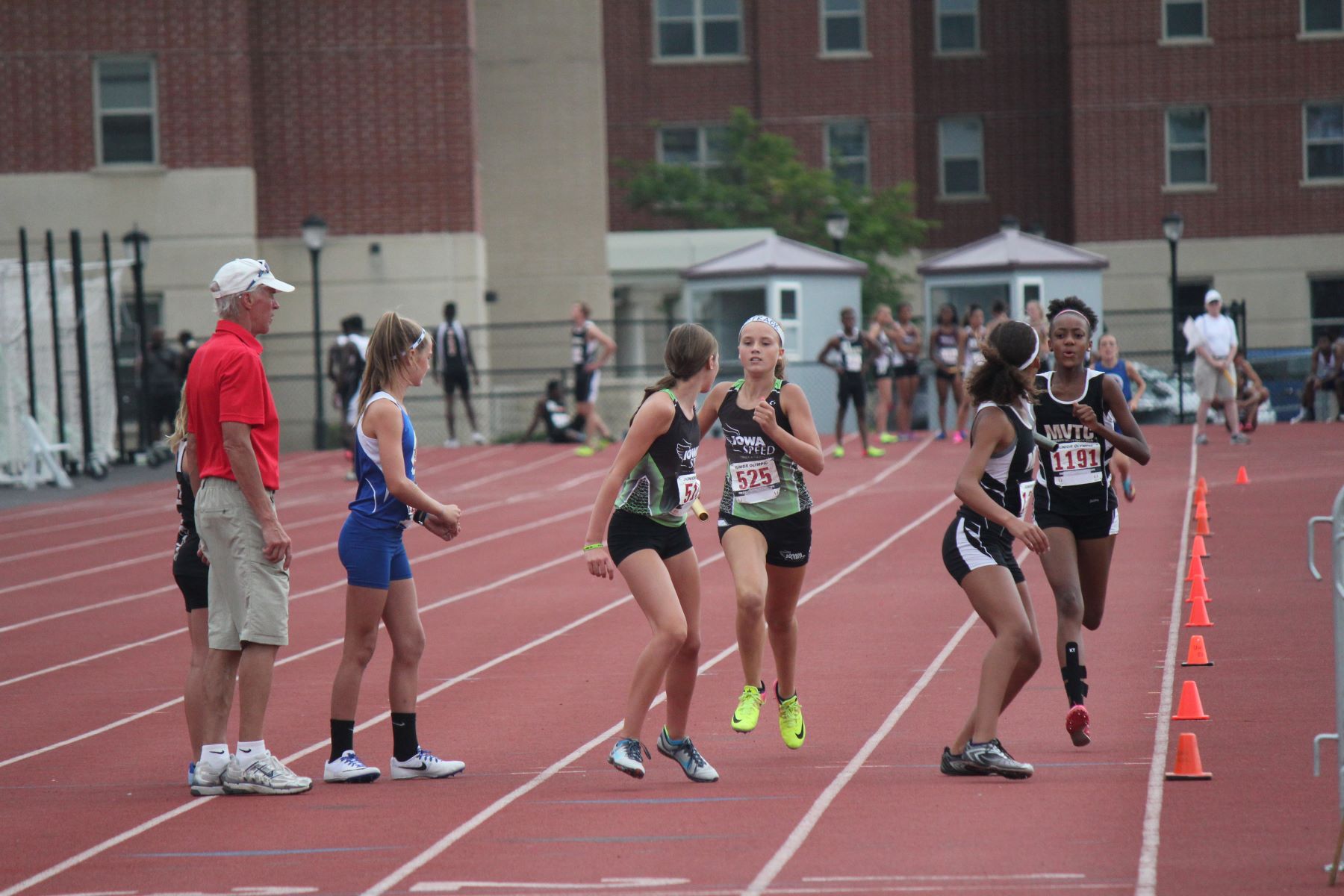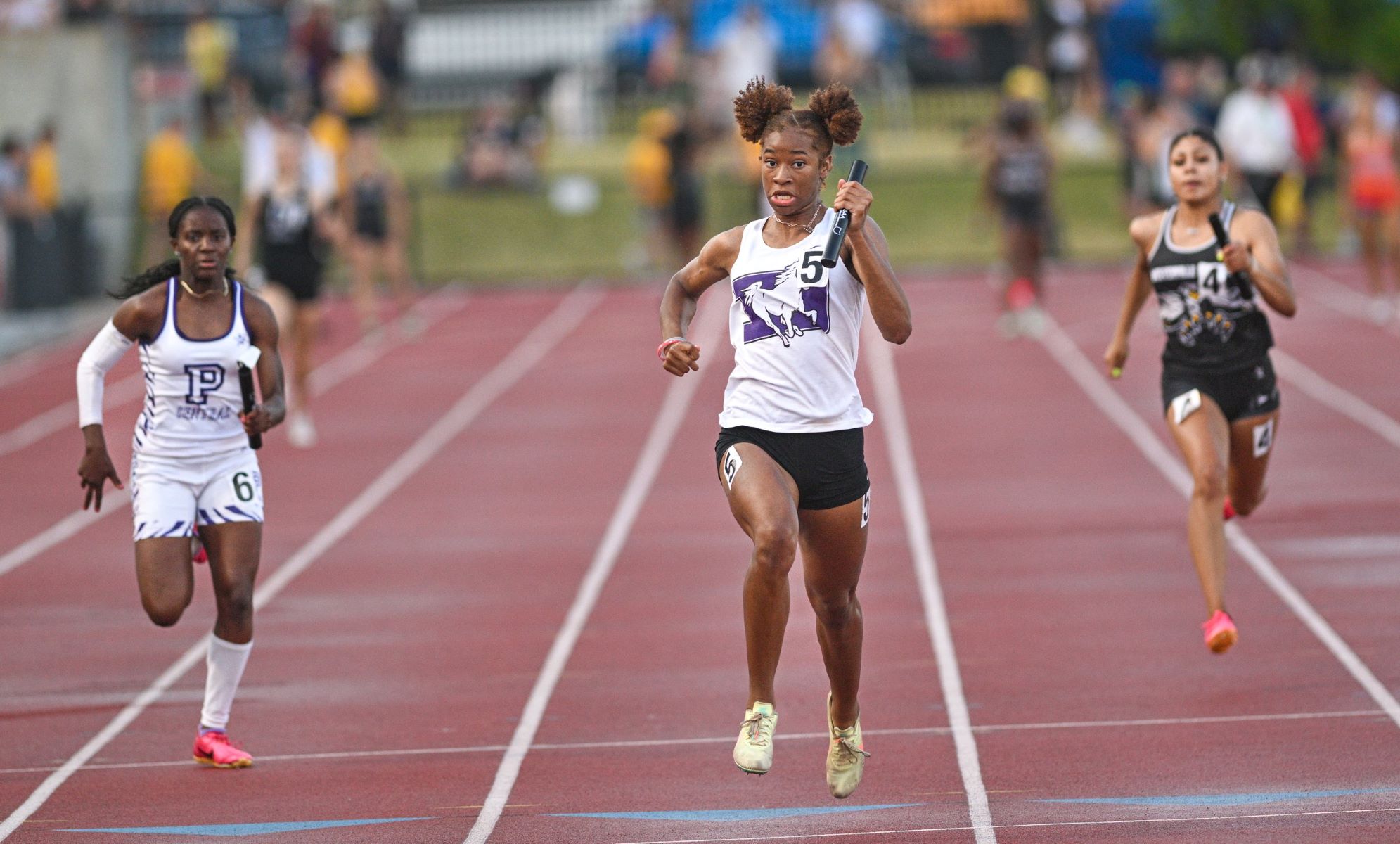Home>Misc>Featured>Which Occurs When The School Prioritizes Athletic Performance


Featured
Which Occurs When The School Prioritizes Athletic Performance
Modified: August 21, 2023
Discover the impact of prioritizing athletic performance in schools and its effects on students. Learn more about the featured topic here.
Introduction
Sports have long been an integral part of the education system, providing students with opportunities for physical fitness, teamwork, and personal growth. However, there has been an increasing trend in schools where athletic performance is given higher priority over academic achievements and other non-athletic programs. This shift in focus raises concerns about the potential negative effects it can have on students and the overall education system.
Athletic performance refers to the measures of success or achievement in sports such as winning games, breaking records, or earning athletic scholarships. While it is important to recognize the value of sports in promoting physical health and personal development, it is equally vital to maintain a balance between athletics and academics. When a school prioritizes athletic performance above all else, it can lead to detrimental consequences for students, teachers, and the school community as a whole.
In this article, we will explore the negative effects of prioritizing athletic performance in schools. We will examine how it can lead to neglecting academic achievements, limited resources for non-athletic programs, increased pressure and stress on athletes, and the perpetuation of inequality and exclusion. It is crucial to understand these drawbacks to foster a more holistic approach to education that values academic excellence while also promoting sports and physical well-being.
It must be noted that while the focus of this article is on the potential negative effects, it does not imply that sports and athletic performance should be disregarded in education. The aim is to encourage a balanced approach that recognizes the importance of both academics and athletics and ensures the well-rounded development of students.
Definition of Athletic Performance
Athletic performance refers to the level of achievement or success attained in sports or physical activities. It is typically measured by factors such as winning games, setting records, earning accolades, and demonstrating exceptional skill and athleticism. Athletic performance is often associated with competitive sports at various levels, including interscholastic, collegiate, and professional levels.
More than just the outcome of a particular game or event, athletic performance encompasses a range of attributes and qualities. It involves physical capabilities such as speed, strength, endurance, agility, and coordination. Additionally, mental aspects like focus, determination, resilience, and strategic thinking play a crucial role in an athlete’s performance.
Athletic performance extends beyond individual achievements and also includes team performance. The ability to work collaboratively, communicate effectively, and support one’s teammates is vital for success in team sports. The collective performance of a team, including its ability to win matches, achieve championships, and exhibit sportsmanship, contributes to the overall assessment of athletic performance.
It is important to note that athletic performance is not limited to traditional team sports such as football, basketball, or soccer. It encompasses a wide range of physical activities, including individual sports like swimming, running, gymnastics, as well as alternative sports like skateboarding, rock climbing, and martial arts.
Athletic performance is often recognized and rewarded through various means, including medals, trophies, scholarships, and endorsements. It serves as a significant motivator for athletes, encouraging them to strive for excellence and achieve personal and team goals.
Furthermore, athletic performance is closely intertwined with personal growth and development. Engaging in sports can enhance physical fitness, build character, develop leadership skills, and teach valuable life lessons such as discipline, perseverance, and teamwork.
While athletic performance undoubtedly has its merits, it is imperative to maintain a balanced approach that values academics and other non-athletic pursuits alongside sports. Prioritizing athletic performance without considering its potential drawbacks can lead to detrimental consequences in an educational setting.
Importance of Sports in Education
Sports play a significant role in education, offering numerous benefits that contribute to the overall development of students. Incorporating sports into the educational curriculum provides a well-rounded learning experience that extends beyond the confines of the classroom. Here are some key reasons why sports are important in education:
- Physical Health: Engaging in sports activities promotes physical fitness and overall well-being. Regular exercise through sports helps students develop healthy habits, improve cardiovascular health, build strength and endurance, and maintain a healthy weight. It also reduces the risk of chronic illnesses such as obesity, diabetes, and heart disease.
- Mental and Emotional Well-being: Participating in sports fosters mental and emotional well-being. Physical activity releases endorphins, which are natural mood boosters, helping to reduce stress, anxiety, and depression. Sports also provide an outlet for students to release pent-up energy, frustrations, and negative emotions, promoting mental clarity and overall emotional balance.
- Character Development: Sports instill important values and character traits in students. Through sports, students learn about discipline, perseverance, teamwork, leadership, and sportsmanship. They develop a strong work ethic, learn to set goals, and strive to achieve them. The challenges and setbacks faced in sports teach resilience and how to bounce back from failures, preparing students for the realities of life.
- Social Skills: Sports offer opportunities for students to interact and collaborate with their peers, building social skills and fostering positive relationships. Being part of a team promotes effective communication, cooperation, and respect for others. It helps students develop empathy, learn to celebrate others’ successes, and provide support during difficult times. These social skills are transferable to various aspects of life, including academics, career, and personal relationships.
- Academic Performance: Engaging in sports can have a positive impact on academic performance. Research has shown that regular physical activity enhances cognitive function, improves memory, concentration, and problem-solving skills. Participation in sports also teaches time management, as students must balance their academic responsibilities with sports practice and competition.
Incorporating sports into education helps create a well-rounded learning environment that addresses the holistic development of students. It fosters a healthy balance between academics, physical fitness, and character-building, preparing students for success in various aspects of life.
Negative Effects of Prioritizing Athletic Performance
Prioritizing athletic performance in schools can have several negative effects on students, teachers, and the overall education system. While sports undoubtedly have their benefits, an excessive emphasis on athletic success can lead to the following drawbacks:
- Neglecting Academic Achievements: When a school prioritizes athletic performance above all else, there is a risk of neglecting academic achievements. Limited resources, time, and attention may be allocated to academic programs, leading to a decline in educational quality. This can negatively impact the academic success and future opportunities of students who excel in non-athletic areas.
- Limited Resources for Non-Athletic Programs: Channeling resources primarily towards sports programs can result in limited resources for other non-athletic programs. Extracurricular activities such as arts, music, drama, and clubs may receive inadequate funding, leading to a reduced range of opportunities for students to explore their interests and talents beyond athletics.
- Pressure and Stress on Athletes: Placing excessive emphasis on athletic performance can subject athletes to immense pressure and stress. The weight of expectations to constantly perform at a high level can take a toll on their mental well-being. This can lead to increased anxiety, burnout, loss of enjoyment in sports, and compromised overall well-being.
- Inequality and Exclusion: Prioritizing athletic performance can perpetuate inequality and exclusion within the school community. Students who do not excel in sports may feel marginalized or overlooked. This can create an environment where certain students receive preferential treatment or opportunities solely based on their athletic abilities, widening the gap between athletes and non-athletes.
It is important to note that these negative effects do not imply that sports should be disregarded in education. Sports can provide valuable lessons and benefits to students. However, when athletic performance is given undue priority, it can lead to an imbalance that hinders the overall educational experience.
It is essential for schools to strike a balance between academics and athletics, ensuring that students have opportunities to excel in both realms. By fostering a holistic approach to education that values academic achievements, non-athletic programs, and the well-being of all students, schools can create an inclusive and well-rounded environment that benefits everyone.
Neglecting Academic Achievements
One of the negative effects of prioritizing athletic performance in schools is the potential neglect of academic achievements. When a school overly focuses on sports, there is a risk of allocating limited resources, time, and attention to academic programs. As a result, the educational quality may suffer, impacting the academic success and future opportunities of students who excel in non-athletic areas.
By prioritizing athletic performance, schools may inadvertently create an environment where academic achievements are overshadowed and undervalued. This can lead to a lack of support and recognition for students who excel academically, potentially dampening their motivation and hindering their educational growth.
Furthermore, the pressure to prioritize athletic performance can result in reduced instructional time dedicated to academics. Schools may emphasize sports practice or competitions to the extent that it takes away valuable time from core academic subjects. This shift in focus may result in a curriculum that does not adequately challenge or engage students academically, leading to a decline in educational outcomes.
The neglect of academic achievements can also have long-term consequences for students. While sports can provide valuable life lessons and physical development, academic achievements are often essential for college admissions, scholarships, and future career opportunities. Students who excel academically may find themselves at a disadvantage when it comes to accessing higher education or pursuing career paths that require strong academic backgrounds.
Striking a balance between academics and athletics is crucial. Schools should ensure that academic programs receive adequate resources, attention, and support alongside sports programs. This includes providing qualified teachers, offering challenging and diverse curriculum options, and fostering an environment that recognizes and celebrates academic achievements.
Encouraging a culture that values both academic and athletic accomplishments can promote a well-rounded education that prepares students for success in various aspects of life. By prioritizing academic achievements alongside athletic performance, schools can provide equal opportunities for all students and nurture their holistic development.
Limited Resources for Non-Athletic Programs
Another negative effect of prioritizing athletic performance in schools is the potential allocation of limited resources for non-athletic programs. When a school emphasizes sports above all else, there is a risk of diverting funding, facilities, and attention primarily towards athletics, leaving other non-athletic programs with insufficient resources and opportunities.
Extracurricular activities such as arts, music, drama, and clubs are crucial for providing a well-rounded education and allowing students to explore their interests and talents beyond athletics. However, when resources are predominantly dedicated to sports, these programs often suffer. This can result in a reduced range of opportunities, limited access to necessary equipment or instruction, and a diminished overall learning experience for students who are passionate about non-athletic pursuits.
The lack of adequate resources for non-athletic programs can have a negative impact on students who excel in areas such as the arts, music, or academic clubs. It may discourage their interests and diminish their motivation to pursue these passions, ultimately hindering their personal growth and potential. Furthermore, it limits the diversity of opportunities available to students, restricting their ability to explore various fields and develop skills beyond the realm of sports.
Moreover, the limited resources for non-athletic programs can lead to a lack of recognition and support from the school community. Athletic events often receive more prominence and visibility, with extensive media coverage and enthusiastic support from students and parents. This disparity in attention and resources can create an imbalance that overlooks the achievements and contributions of students involved in non-athletic programs.
To address this issue, schools should strive for equity and balance by allocating resources fairly across all programs, both athletic and non-athletic. This includes ensuring sufficient funding, providing appropriate facilities and equipment, and fostering a supportive environment that recognizes and values the contributions of students in all areas.
By prioritizing non-athletic programs alongside athletics, schools can create a diverse and inclusive educational environment where students are encouraged to explore their interests and develop their talents in various fields. This promotes a well-rounded education that nurtures the individual growth and potential of all students.
Pressure and Stress on Athletes
A significant negative effect of prioritizing athletic performance in schools is the intense pressure and stress it places on athletes. When the focus is solely on achieving athletic success, athletes can experience significant mental and emotional strain, which can have long-term negative consequences on their well-being.
Athletes face immense pressure to constantly perform at a high level. They may feel the burden of expectations from coaches, peers, parents, and the school community. The pressure to win games, break records, and secure athletic scholarships can create a highly competitive and demanding environment that can be overwhelming for athletes, leading to increased stress and anxiety.
Moreover, the pursuit of athletic success often entails rigorous training schedules, intense competition, and sacrifices in other aspects of life. Athletes may struggle to balance their academic responsibilities, social life, and personal well-being with the demands of their sport. This can result in physical exhaustion, fatigue, and decreased overall enjoyment in sports.
The stress and pressure experienced by athletes can have detrimental effects on their mental health. They may develop symptoms of anxiety, depression, and burnout. The constant need to meet expectations and perform at a high level can cause a decline in their overall well-being, affecting their academic performance and personal relationships.
It is important for schools to prioritize the mental and emotional well-being of athletes alongside their athletic performance. This includes providing access to mental health resources, implementing strategies to manage stress and anxiety, and promoting a healthy balance between academics, athletics, and personal life.
Coaches, teachers, and parents also play a crucial role in mitigating the pressure and stress on athletes. They should emphasize the importance of sportsmanship, effort, and personal growth over solely focusing on winning. Additionally, fostering a supportive environment that encourages athletes to seek help and communicate their feelings can contribute to their overall well-being.
By addressing the pressure and stress placed on athletes, schools can create a healthier athletic culture that allows athletes to thrive not only in their sport but also in their personal and academic lives. This holistic approach ensures that athletes develop a positive relationship with sports and promotes their overall well-being.
Inequality and Exclusion
Prioritizing athletic performance in schools can perpetuate inequality and exclusion within the school community. When sports are given undue importance, it can create a divide between athletes and non-athletes, leading to feelings of marginalization and unfair treatment.
Students who do not excel in sports may feel excluded or undervalued in a school culture that heavily emphasizes athletic accomplishments. They may struggle to find their place or receive recognition within the school community, which can negatively impact their self-esteem and sense of belonging.
Furthermore, the prioritization of athletic performance can lead to unequal distribution of resources, opportunities, and support. Athletes may receive preferential treatment in terms of facility access, coaching, and funding for their programs, while other non-athletic programs may struggle to receive the same level of resources and attention.
This disparity in resources and recognition perpetuates inequality within the school community. Students who excel in non-athletic areas, such as music, arts, or academic pursuits, may not receive the same level of support or celebration as their athletic counterparts. This can create an environment where certain talents and interests are valued more than others, stifling the potential of students in non-athletic endeavors.
To address this issue, it is important for schools to foster an inclusive environment that values and celebrates students’ diverse talents and interests. This entails providing equal resources and opportunities for non-athletic programs, recognizing achievements in all areas, and promoting a culture of inclusion and respect.
Encouraging collaboration and cooperation between athletes and non-athletes is also crucial in reducing inequality and exclusion. This can be done through joint events, shared facilities, and opportunities for students to appreciate and understand each other’s talents and achievements. By bridging the gap between athletes and non-athletes, schools can foster a sense of community and unity among all students.
By prioritizing equity and inclusion alongside athletic performance, schools can create an environment where all students feel valued and supported. This ensures that talent and potential are recognized and nurtured, regardless of whether it lies in sports or other non-athletic pursuits.
Balancing Athletics and Academics
Striking a balance between athletics and academics is crucial for providing a well-rounded education that addresses the holistic development of students. While sports offer numerous benefits, it is important to ensure that they do not overshadow the importance of academic achievements. Here are some strategies to achieve this balance:
- Educational Support for Athletes: Schools should provide academic support for student-athletes to manage their dual commitments effectively. This includes offering flexible schedules, study hall sessions, and tutoring programs to help athletes stay on top of their coursework.
- Integration of Sports and Academics: Encouraging connections between sports and academics can enhance students’ learning experiences. For example, teachers can incorporate sports-related case studies, incorporate sports-themed projects or assignments, and highlight the academic aspects of sports such as sports science or sports journalism.
- Emphasis on Time Management Skills: Developing time management skills is essential for athletes to balance their academic and athletic commitments. Schools can implement programs or workshops that teach students effective time management techniques, prioritization, and goal setting to help them succeed in both areas.
- Equal Resource Allocation: It is crucial to ensure that resources and support are allocated equally to both athletic and non-athletic programs. This includes providing adequate funding, facilities, and coaching staff for various extracurricular activities, including sports and non-athletic pursuits.
- Awareness of Student Well-being: Schools should prioritize the mental and emotional well-being of students involved in sports. This includes monitoring and managing stress levels, providing access to mental health resources, and promoting a healthy balance between academics, sports, and personal life.
To achieve a successful balance between athletics and academics, collaboration and open communication between coaches, teachers, and parents are essential. These stakeholders should work together to support student-athletes, ensuring that they have opportunities to excel both athletically and academically.
Additionally, fostering a culture that values the overall well-being and growth of students, beyond their athletic achievements, is crucial. This can be done through recognition of academic accomplishments, celebrating achievements in non-athletic programs, and promoting the importance of a well-rounded education.
By maintaining this balance, schools can provide students with a comprehensive education that nurtures their academic abilities, physical health, and personal development, preparing them for success in all aspects of life.
Conclusion
The prioritization of athletic performance in schools can have negative effects on various aspects of the educational experience. While sports offer valuable opportunities for physical fitness, teamwork, and personal growth, it is crucial to strike a balance between athletics and academics.
By neglecting academic achievements, schools risk compromising the educational quality and future opportunities of students who excel in non-athletic areas. Limited resources for non-athletic programs can lead to a lack of opportunities and recognition for students with diverse talents and interests.
The intense pressure and stress placed on athletes can have detrimental effects on their mental and emotional well-being. Additionally, prioritizing athletic performance can perpetuate inequality and exclusion within the school community, marginalizing students who do not excel in sports.
Strategies for balancing athletics and academics include providing educational support for athletes, integrating sports and academics, emphasizing time management skills, equal resource allocation, and prioritizing student well-being. Collaboration and communication between coaches, teachers, and parents are vital to achieve this balance.
It is essential to foster an inclusive and well-rounded educational environment that values academic achievements, non-athletic programs, and the overall well-being of students. By embracing this approach, schools can create an environment where students can thrive in both their academic pursuits and their athletic endeavors.
Ultimately, the aim should be to develop students who are not only physically active and successful in sports but also intellectually curious, emotionally resilient, and socially engaged. Striking the right balance between athletics and academics is crucial for providing a comprehensive education that prepares students for success in all aspects of life.


